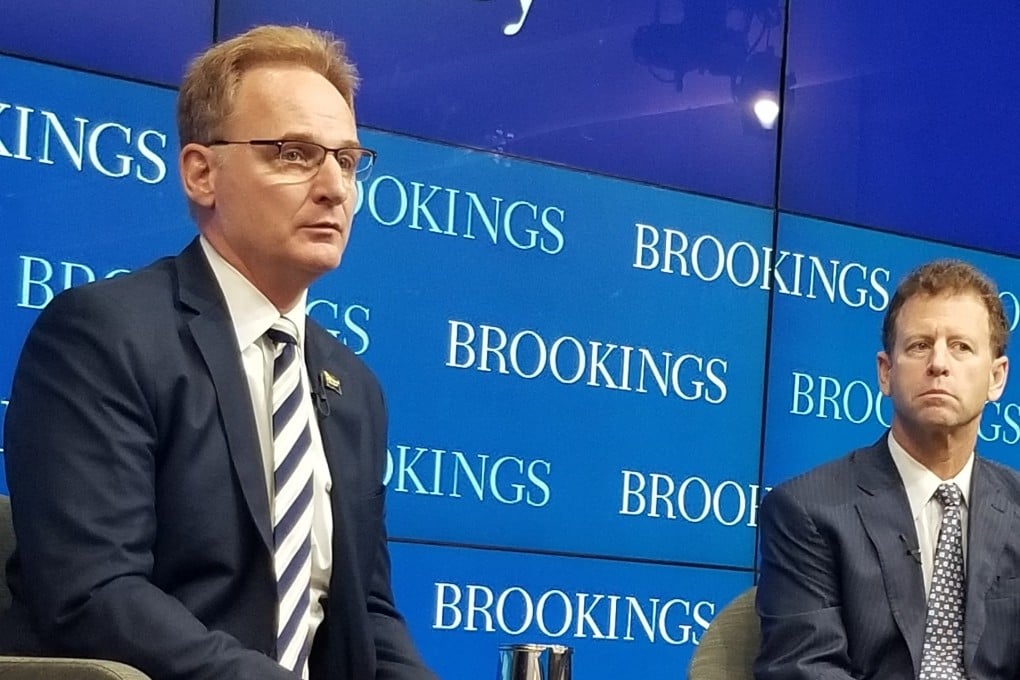Top US Navy official expresses concerns about growing threat from China
- ‘They would not do well against us right now. But I’m less concerned about right now than I am 10 years from now,’ acting US Navy secretary says
- US needs to redouble efforts to stay ahead of its adversaries, according to Thomas Modly

The US Navy would have no problem defeating its Chinese counterpart in a naval conflict today, but Beijing’s outsized ambition and “off the charts” shipbuilding capabilities are rapidly turning it into a formidable adversary, the nation’s top naval official said on Friday.
Thomas B. Modly, the acting US Navy secretary, said that in order to better counter China and Russia, the navy needs more technologically advanced amphibious, support and unmanned vessels and more focus on internal efficiency.
“The Chinese navy is growing by leaps and bounds,” and are on target to be a real threat within a decade, Modly said at the Brookings Institution think tank in Washington. “No one should have any illusion about what their long-term objectives are.”
Given the increasingly competitive environment, the US needs to redouble efforts to stay ahead of its adversaries, he said.

“They steal a lot of stuff from us. It allows them to leapfrog us in ways we haven’t quite figured out how to deal with,” Modly said. “That technology gap is going to get closer and closer.”